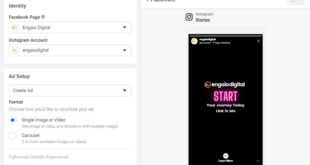Every brand needs visibility on social media platforms. In 2021, it is a necessity rather than an option. Facebook alone is used by 2.8 billion users daily. These platforms can expose your products to a gigantic audience, help you boost sales, raise brand awareness, and achieve other objectives. This dimension of marketing also has its pitfalls, as modern consumers are savvy.
Users have grown immune to conventional sales tactics. They skip anything that looks like paid ads. To succeed in this dynamic environment, brands need tools that streamline and optimize their content flow. The arsenal described on https://www.aitarget.com/ecommerce.html lets retailers reach their goals across social media — on Facebook, Instagram and Snapchat. Outsourcing to experts helps them avoid embarrassing mistakes.
1. Spreading Yourself Too Thin
Should your brand use as many platforms as possible? The answer is definitely no. Each social media network has a specific audience. For example, Snapchat is used by millennials and Generation Z — people under 35 who like having fun. Meanwhile, LinkedIn is designed for professional communication and B2B cooperation. Would you advertise car wax on Pinterest?
Engaging every platform in existence is wasteful and unreasonable. Instead, choose the networks most used by your target audience. Obviously, this requires a clear buyer persona, so invest in market research beforehand. Even narrowing the focus to 1-2 platforms is acceptable. What matters is the efficiency of promotion, not the quantity of channels.
2. Products Instead of Stories
The goal of digital marketing is to get your offer in front of potential customers to gain leads, boost revenues, etc. Naturally, you may feel tempted to focus on your products or services. Do not devote all of your social media space to extolling their benefits. The audience will feel inundated with advertising, so your follower count will shrink.
Consumers do not appreciate impersonal content, especially sales materials. Instead of touting the products, tell engaging stories. Posts, videos, and other formats must be used to engage the audience and evoke emotions. Your content must look natural, like an update from a friend.
The need to tell stories prescribes the use of different media. Videos are more engaging than static images. Nobody wants to read long texts. Remember that you have to capture the viewer’s interest in just one second.
3. Ignoring Social Proof
When users see other consumers praising your products, they are more likely to try them. Thus, make the most of user-generated content. Encourage your followers to share their opinions. Arrange contests, etc.
Social proof shows that your brand is trustworthy and reliable. This is also more effective than reviews, as they are posted on specialized sites. Social media, in comparison, is used by most of us daily.
The Bottom Line
Brands that disregard these basic rules set themselves up for failure. Remember that these platforms were designed to be ‘social’. While this seems obvious, too many brands treat them as a way to showcase products, rather than create a genuine connection to their audience.
 HammBurg Be informed with latest news, reviews, entertainment, lifestyle tips, and much more.
HammBurg Be informed with latest news, reviews, entertainment, lifestyle tips, and much more.




